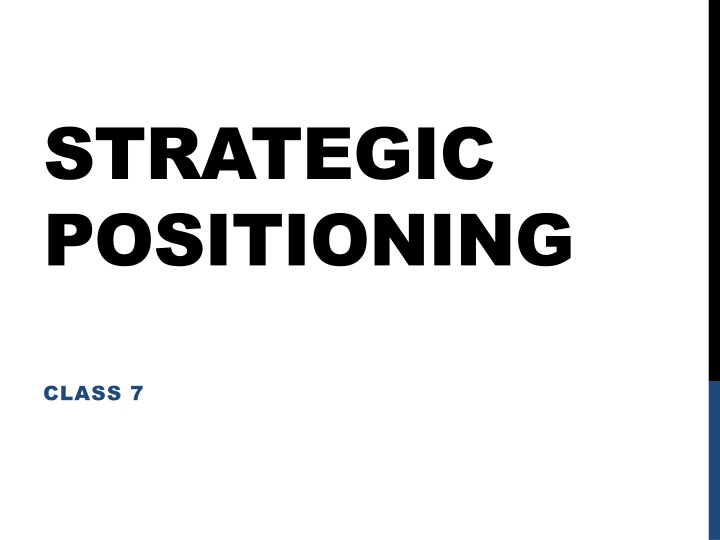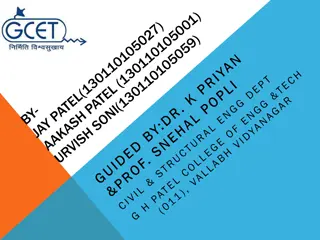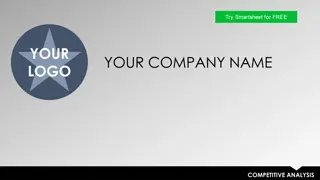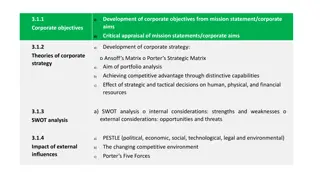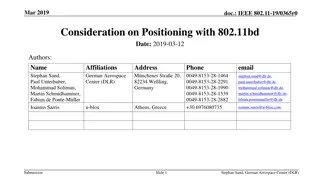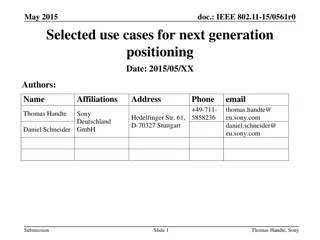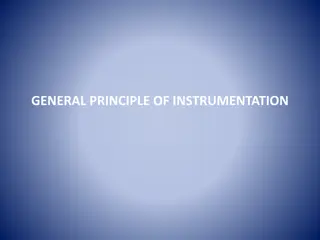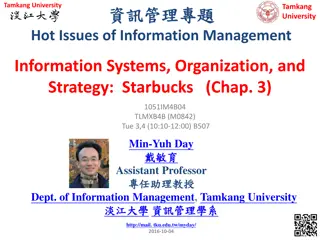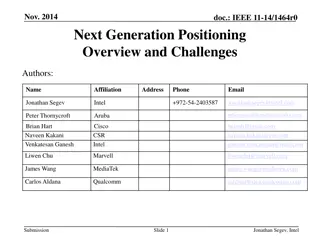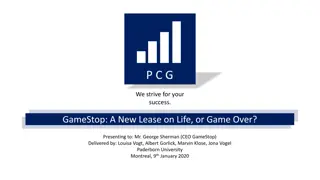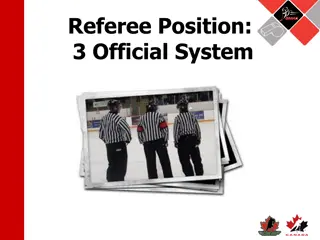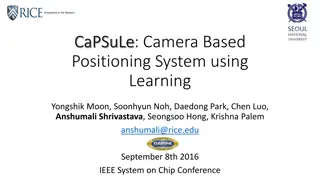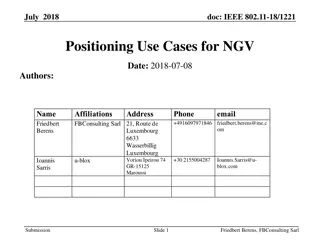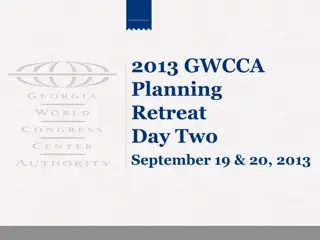Strategic Positioning and Competitive Analysis
Strategies employed by American Airlines, Southwest Airlines, and JetBlue Airlines to gain a competitive edge within their industry. Learn about the concept of competitive advantage and the importance of value creation in maximizing profitability. Understand the dynamics of consumer benefit, willingness to pay, producer surplus, and value creation in the market.
Download Presentation

Please find below an Image/Link to download the presentation.
The content on the website is provided AS IS for your information and personal use only. It may not be sold, licensed, or shared on other websites without obtaining consent from the author.If you encounter any issues during the download, it is possible that the publisher has removed the file from their server.
You are allowed to download the files provided on this website for personal or commercial use, subject to the condition that they are used lawfully. All files are the property of their respective owners.
The content on the website is provided AS IS for your information and personal use only. It may not be sold, licensed, or shared on other websites without obtaining consent from the author.
E N D
Presentation Transcript
STRATEGIC POSITIONING CLASS 7
INDUSTRY ANALYSIS Firms within an industry will pursue their own unique strategies for success. AMERICAN AIRLINES Hub and Spoke concept, Frequent Flyer Program and a sophisticated reservation system (SABRE) SOUTHWEST AIRLINES Flying direct from mid sized cities, better working conditions for workers, a highly motivated staff. Only flying one type of plane (Boeing 737 s) JETBLUE AIRLINES Leather seats and TV s in every seat. It tried to position itself as edgy and urban since a majority of their flights were out of New York
COMPETITIVE ADVANTAGE Benefit Position relative to competitors Value Created relative to competitors Economic Profitability Cost Position relative to competitors Market Economics Competitive advantages are conditions that allow a company to produce a good or service at a lower price or in a more desirable fashion for customers.
MAXIMUM WILLINGNESS TO PAY VS CONSUMER BENEFIT If you are willing to pay Rs. 5000 a ticket to watch the Pitbull concert that would be your maximum willingness to pay If the ticket cost you Rs. 3000 then your consumer surplus would be Rs. 2000. B = benefit a consumer expects from purchasing a product P = The Monetary Price of the Product You can buy a Honda Accord for $21,000 (P) You were willing to pay $30,000 for the Accord which means your B = 30,000 P; B = $9000 You can buy a Nissan Leaf for $29,000 (P) You value the Leaf at $36,000 which means that your consumer benefit (B) B = 36000 P; B = $7000 If you were willing to pay $30,000 for a car, which car do you buy?
PRODUCER SURPLUS AND VALUE CREATION Economic Value is created when a producer combines inputs such as Land, Labour and Capital to create a product that the perceived benefit (B) is greater than the Costs (C) C = Costs of creating the product P = The Monetary Price of the Product Therefore, Producer Surplus = P C Value Created = Consumer Surplus + Producer Surplus Value Created = (B-P) + (P-C) Value Created = B-P+P-C Value Created = B - C
COMPONENTS OF VALUE CREATION $120 $100 $80 Axis Title $60 $40 $20 $0 C B-C $70 B B-P $45 P-C $25 C Series1 $30 $100 $30 C B-C B B-P P-C Firms Cost Value Created Consumers Maximum Willingness to Pay Consumer Surplus Firms Profit
VALUE CREATION No product can be successful without creating POSITIVE economic Value Therefore B-C must be positive. When B>C then it is always possible for entrepreneurs to strike win win deals with suppliers and consumers. However, a positive B-C does not guarantee positive profit. In markets when entry is easy and the product is homogeneous . Existing and new firms will bid down the price till there is 0 economic profit. A firm therefore must generate a B-C that other firms cannot replicate
MICHAEL PORTERS GENERIC STRATEGIES Strategic Logic? Position? Type of Advantage? Company products can be produced at lower cost per unit than competitor products Company can Undercut rival s prices and sell more Match Rivals prices and attain higher price-cost Cost Leadership Broad Company products are capable of commanding a price premium compared to competitors Company can Match Rivals prices and sell more Charge a premium price and attain higher price-cost Benefit Leadership Scope Company configures its value chain to so create a superior economic value within a narrow set of industry segments. Focus Narrow
